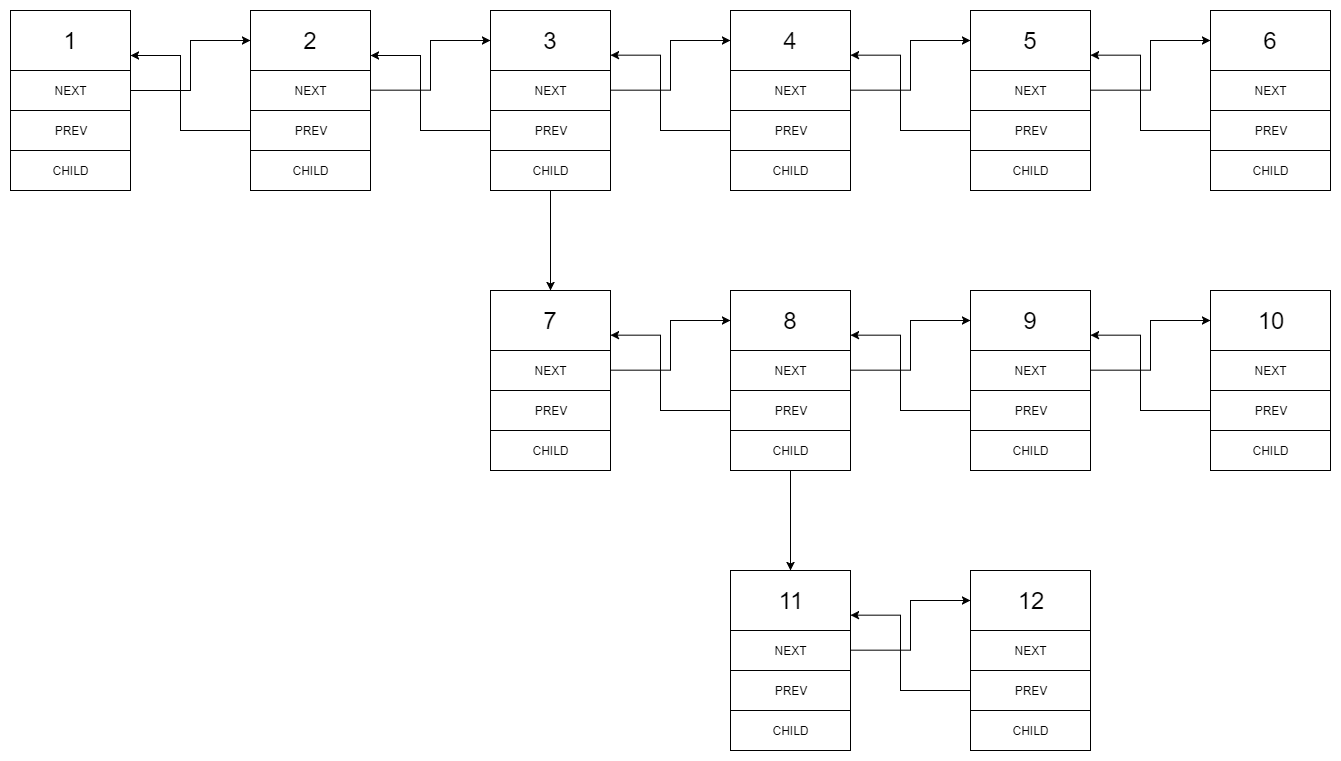430. Flatten a Multilevel Doubly Linked List
Tags: ‘Linked List’, ‘Depth-first Search’
You are given a doubly linked list which in addition to the next and previous pointers, it could have a child pointer, which may or may not point to a separate doubly linked list. These child lists may have one or more children of their own, and so on, to produce a multilevel data structure, as shown in the example below.
Flatten the list so that all the nodes appear in a single-level, doubly linked list. You are given the head of the first level of the list.
Example:
Input:
1---2---3---4---5---6--NULL
|
7---8---9---10--NULL
|
11--12--NULL
Output:
1-2-3-7-8-11-12-9-10-4-5-6-NULL
Explanation for the above example:
Given the following multilevel doubly linked list:
We should return the following flattened doubly linked list:
Solution
When meet a node with child, merge child to main list(ignoring sub child, because that will be merged later)
/*
// Definition for a Node.
class Node {
public int val;
public Node prev;
public Node next;
public Node child;
public Node() {}
public Node(int _val,Node _prev,Node _next,Node _child) {
val = _val;
prev = _prev;
next = _next;
child = _child;
}
};
*/
class Solution {
public Node flatten(Node head) {
if (head == null) return null;
Node curr = head;
while (curr != null) {
if (curr.child == null) {
// Case 1: No child
curr = curr.next;
} else {
// Case 2: Has child.
// Iterate through child inoring subchild, connect back to main list
Node temp = curr.child;
//find tail of child
while (temp.next != null) {
temp = temp.next;
}
//connect temp with curr.next(if not null)
temp.next = curr.next;
if (curr.next != null) curr.next.prev = temp;
//connect curr with child, and remove curr.child
curr.next = curr.child;
curr.child.prev = curr;
curr.child = null;
}
}
return head;
}
}

